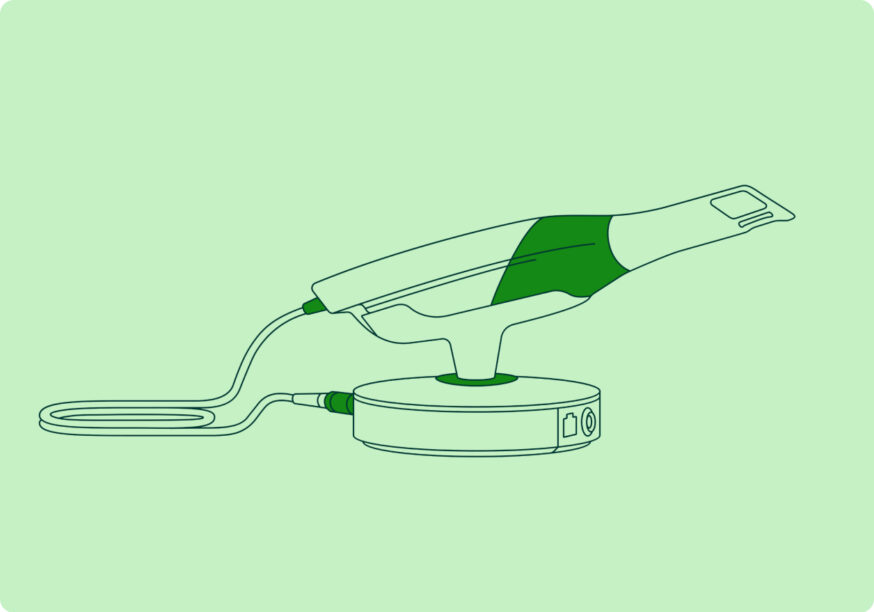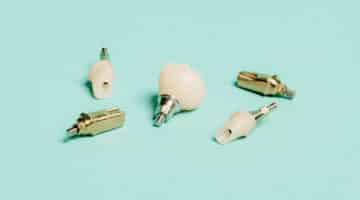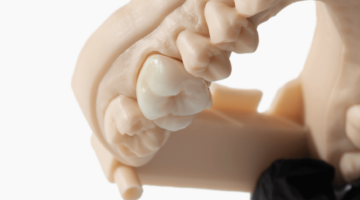Here’s a familiar scenario: you bring your car into the shop for a routine oil change. After poking around, the mechanic returns to you with an unexpected list of additional plugs, caps, belts, bits and bobs that must be replaced to keep the car running, plus a revised bill. You don’t know a manifold from manicotti, so your choices are take the mechanic at their word or take your chances.
In dentistry, patients can sometimes feel a similar sense of bewilderment–they go in for a cleaning and walk away with a diagnosis. With no real frame of reference, this can leave a bad taste in their mouths, which can potentially lead them to decline your help altogether.
Can this kind of scenario be prevented? Is there a way to get patients on the same page, more inclined to accept treatment? Is there a way to concretely portray results? In the age of Dr. Google and WebMD, how can you foster trust and understanding?
The solution is simple: Dandy’s Diagnostic Scans (also known as wellness scans) are both you and your patient looking under the hood together.
What are Diagnostic Scans?
Diagnostic Scans are an overall dental health evaluation that uses digital technology to create a detailed 3D image of a patient’s teeth, gums, and bite. Every single patient can benefit from a Diagnostic Scan, whether they’re seeking remediation of a specific issue or simply getting a checkup. An excellent way to add ‘wow’ factor to appointments, Diagnostic Scans aid in formulating treatment plans, creating detailed digital records, visualizing outcomes, and enabling practitioners to monitor changes over time, allowing your practice to grow beyond single-tooth dentistry.
How do Diagnostic Scans work?
An intraoral scanner, a small wand-like device, scans a patient’s mouth by projecting and capturing harmless light, taking thousands of pictures of the teeth and gingiva in a fraction of a second. The information from the intraoral scanner is then automatically transmitted to software that stitches the data together and generates a manipulable 3D model on a nearby monitor. In less time than it takes to cook Minute rice, practitioners and patients have access to a highly accurate and infinitely durable model of a patient’s entire mouth.
Why would a practice want to perform dental Diagnostic Scans?
Increased efficiency
Fully digitized information means you and your staff have near-instant access to records, and makes transferring them as easy as the push of a button. In addition, the scan’s simplicity allows for them to be performed by any trained member of staff, reducing appointment times and allowing you to maintain focus on what matters. Finally, adoption of an intraoral scan means an end to traditional dental impressions–this enables your practice to monitor a patient’s mouth more frequently than traditional molds allow and reclaim the valuable office space required to store plaster models.
Higher case acceptance means higher revenue
The digital scanner’s sensitivity allows for far more detailed analysis of patient’s mouths than is possible with the naked eye. This means that you can zoom out from single-tooth dentistry to view the whole mouth–closely tracking the rate of gum recession, tooth/enamel wear, the fit and condition of prostheses, and more–encouraging preventative care.
It is worth noting that a handful of practices are performing Diagnostic Scans for free with the knowledge that said scans will help lead to revenue both while the patient is the chair, and in the future. Scans can lead to reduced attrition, more long-term care, referrals to friends and family, and elective procedures, which our 2023 survey of patient priorities, The Dandy Dental Survey: Patient Experience tells us are highly motivated by practitioners’ suggestions. “[Patients] love to see [Dandy’s imaging] before they leave,” says Dr. Rahul Kallianpur. Scan images, he says, are “the thing [patients] hold onto before they come back. You’re more likely to convert, or get a second consult… it’s that emotional tie.”
Higher overall patient satisfaction
Diagnostic Scans make it possible for patients to quite literally see issues and results.
Also as mentioned earlier, Diagnostic Scans reduce patient discomfort overall by eliminating the need for gag-inducing dental impressions, but they can also reduce the time you spend probing with a mirror and light. That means patients spend less time in the chair, which leads to less time in the waiting room–a factor that our patient priorities survey tells us, represents the single highest correlation with overall satisfaction.
Our patient study showed that they are more comfortable when they know exactly what’s going on; transparency and thorough explanations—both of which are facilitated by Diagnostic Scans—earned dentists high ratings from patients.
Finally, our survey showed that adoption of new tech in itself is correlated with lower patient attrition and a higher likelihood of recommendations/referrals–a finding to which dentists we’ve interviewed can attest: “It’s cool having [intraoral scanners] to show patients what’s possible,” Dr. Kallianpur tells us. “[Patients] tell their friends, ‘My dentist does this differently. There’s some cool technology.’ It’s all about the ‘wow’ factor.” Dr. Kallianpur continues, “I also believe wellness scans are powerful as a comprehensive planning tool,” telling us that they help his practice achieve an important aim in dentistry: co-discovery.
What is co-discovery?
Co-discovery is a relationship-based healthcare practice model whereby a practitioner and patient learn together. For our purposes, this means a practical shift facilitated by technological advancement, that is, the 3D scanner makes it possible for you and your patient to study their mouth in tandem.
Like a driver stretching their time between oil changes, patients are unlikely to address a known problem unless they are in pain or discomfort. An initial consultation’s Diagnostic Scan is the perfect opportunity for you to contextualize any findings, making them real for the patient. As you explore their 3D rendering together, you have the opportunity to glean detailed information on their history, issues, concerns, and goals for treatment. This connects them with their own health and with you as the person advocating for it. This can lead to greater case acceptance—a vital factor in preventative care—and represents a significant step toward comprehensive dentistry.
What is comprehensive dentistry?
Dentists don’t just treat mouths, but the people to whom they belong. Comprehensive dentistry is the idea that dentistry is an integral part of any holistic approach to health.
Central to comprehensive dentistry is an extensive exam interrogating patients’ current issues or concerns, full medical history, and imaging i.e. X-rays and a Diagnostic Scan. Laying this foundation can lead to a widened scope of care. “Dentists showing patients a zoomed-out view of their teeth are able to do more comprehensive care because patients are seeing their mouth as a whole rather than single tooth problems,” says Dr. Kallianpur. He continues: “Treatment planning, bigger cases–I can zoom-out on cracked teeth and big fillings that look like they’re about to break–wear problems. Patients love to see this all in 3D.”
The benefits of Diagnostic Scans to comprehensive dentistry can’t be overstated. Findings in an initial Diagnostic Scan may have far-reaching implications for a patient’s long-term health overall. For example, if a Diagnostic Scan detects tooth-grinding, the comprehensive dentist can mitigate the damage, then encourage the patient to treat its root cause, e.g. sleep apnea or anxiety. The list of health issues that can be tipped off by a good intraoral scan are lengthy as we all know the mouth can be a check engine light for the body.
Why dental Diagnostic Scans are gaining in popularity
Performing Diagnostic Scans on every single patient introduces an amazing opportunity for you to connect through co-discovery, building trust, and transparency. This can lead to higher case acceptance, more revenue for your practice, streamlined workflows, and more comprehensive health solutions including preventative care–a core aim of comprehensive dentistry.
Diagnostic Scans with Dandy
Give every patient the ‘wow factor’ of intraoral scanning with a Diagnostic Scan. Contact us to learn more about Dandy’s digital dental offerings including how to use the new diagnostic tool.



